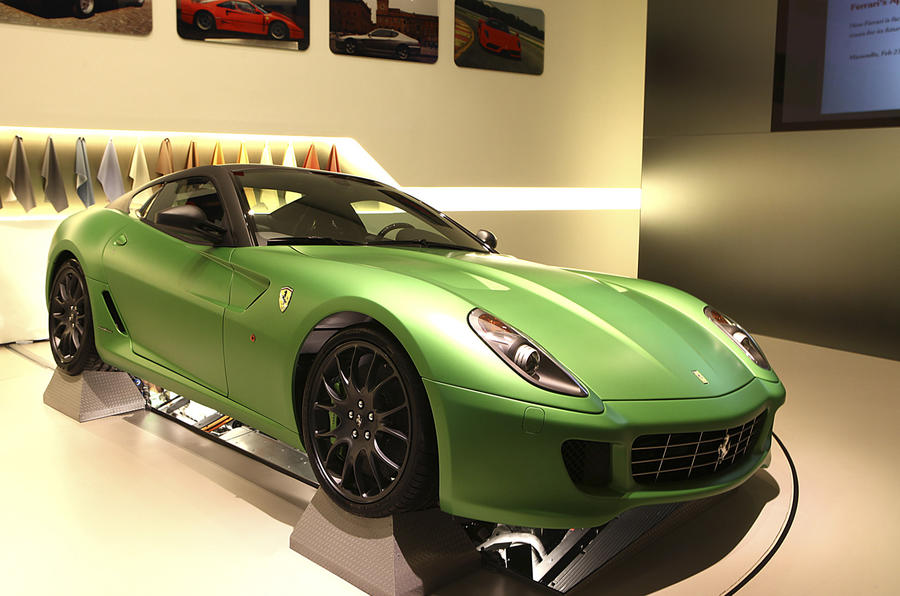Ferrari has used the Geneva motor show to unveil its new hybrid technology, which it says will not only make its cars more efficient, but will also markedly improve performance and handling.
Unveiling the car, Ferrari president Luca di Montezemolo said: "You don't often see a green Ferrari on our Geneva stand, but this year there's a new agenda for us."
See the Ferrari 599 hybrid pics
The addition of an electric motor into the drivetrain will also be accompanied by other efficiency measures including engine downsizing and advanced aerodynamic concepts.
Ferrari’s Hybrid Concept is based on an otherwise-stock 599, and serious road testing of the prototype system is about to begin, according to engineers. But sources say that production Ferrari hybrids will not appear in the showroom for at least three years; they will probably make their debut in a 599 replacement.
By 2018, when most of Ferrari’s line-up will at least have the option of a hybrid drivetrain, the company says the average CO2 output of its fleet will be around 240g/km, down from today’s figure of 310g/km.
Ferrari’s hybrid design is particularly clever because it is notably compact and can be integrated relatively simply into both the company’s front and mid-engined layouts.
The firm considered a number of different concepts, including a version using a four-wheel drive hybrid with an electrically driven front axle, but settled on a small electric motor attached to the rear of the dual-clutch transmission. This motor is meshed directly with the transmission’s primary shaft, which holds the odd-numbered gear ratios.
The electric motor develops 100bhp and 110lb ft of torque and is backed up by an 80kW battery made up of very slim (20mm thick) cells mounted under the 599’s floor.
Other changes include the electronics control module (mounted in the boot, with cooling pumps) and a small electric motor/generator mounted on the front of the engine. This drives the ancillaries (including the air-con and power steering) when the car is running purely on battery power.
At the moment, however, the system’s electric-only range is estimated to be just three miles. The set-up also includes a stop-start facility, which sees the hybrid motor used to restart the engine.
Ferrari estimates that, even with the extra 100kg of weight resulting from the hybrid installation, drivers will see improved in-gear acceleration, including shaving the 0-124mph sprint time back to just 10.4sec from 11.0sec. The 599’s centre of gravity has not risen; it remains just 489mm off the ground.
























Add your comment